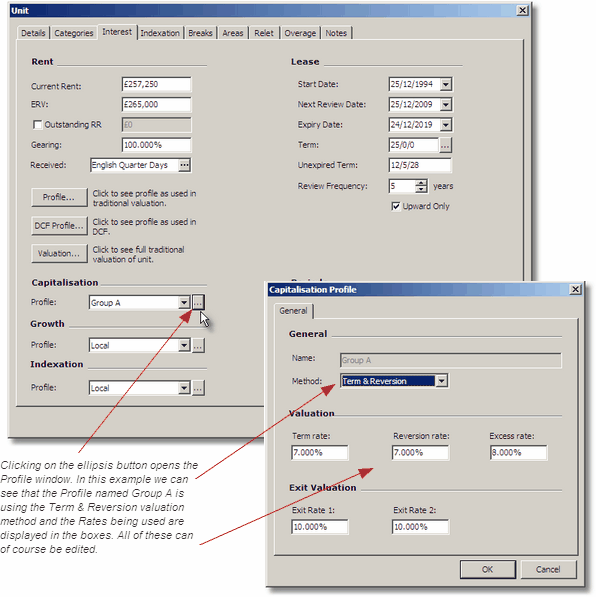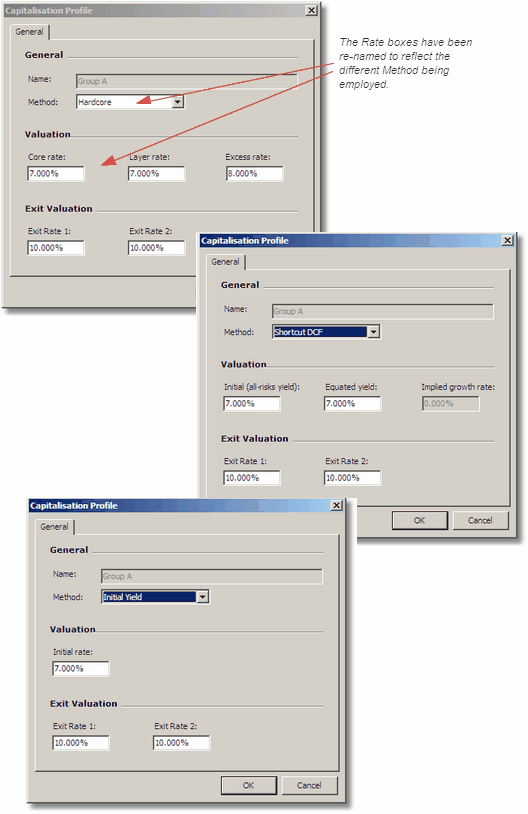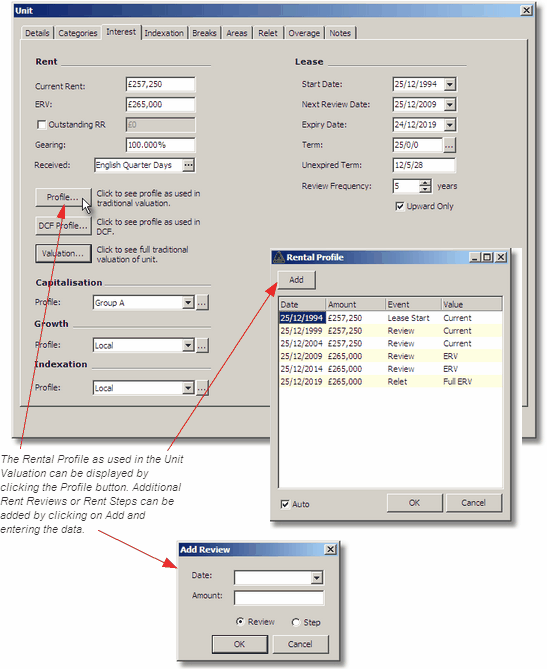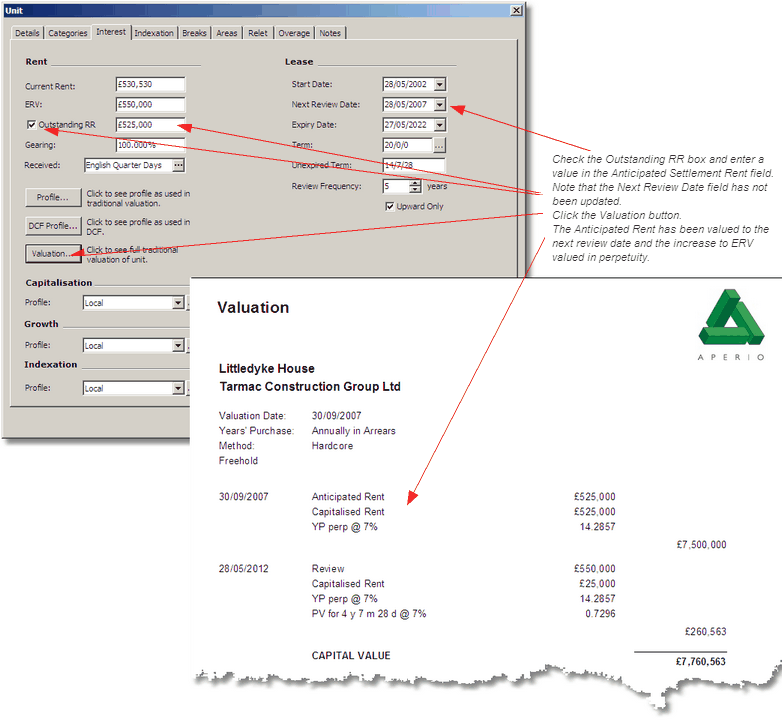Having said that the valuation is carried out at Unit level and that a Property valuation is an aggregation of the Unit values, it follows therefore that the Valuation Methodology is defined at the Unit level. The applied Capitalisation Rates are also defined at Unit level but these can be overridden at Property level in certain circumstances. The Valuation Methods available are Term & Reversion, Hardcore, Initial Yield and Shortcut DCF.
To set up the Valuation Method and Capitalisation Rates select a Unit in a particular Property as shown below.

The Capitalisation Rates and Valuation Method applied to each Unit is selected from the drop down menu, and can either have been set up at Property or Portfolio level, see the section on Capitalisation Rates, or set up as Local to the Unit, a Local option is always available from the drop down menu.
The parameters can be edited in this window but it should be noted that if the Profile being applied has been set up at Property or Portfolio level then any changes made here will be reflected also at Property or Portfolio level, and that any other Units using the same Profile will be affected.

If we leave the Capitalisation Rates as they are for now we can look at how the various other valuation methods are presented in Analyst.


The traditional valuation methods will value the current rent, increase at review and ERV on expiry in the usual manner. However in the case of an Outstanding Review, Analyst can assume the Review was settled at the Anticipated Settlement Rent. To activate this check the Outstanding RR box and enter the Anticipated Settlement Rent in the adjoining field. Although in the example shown below the Next Review Date has not been changed, Analyst remembers the rent profile and values accordingly.
